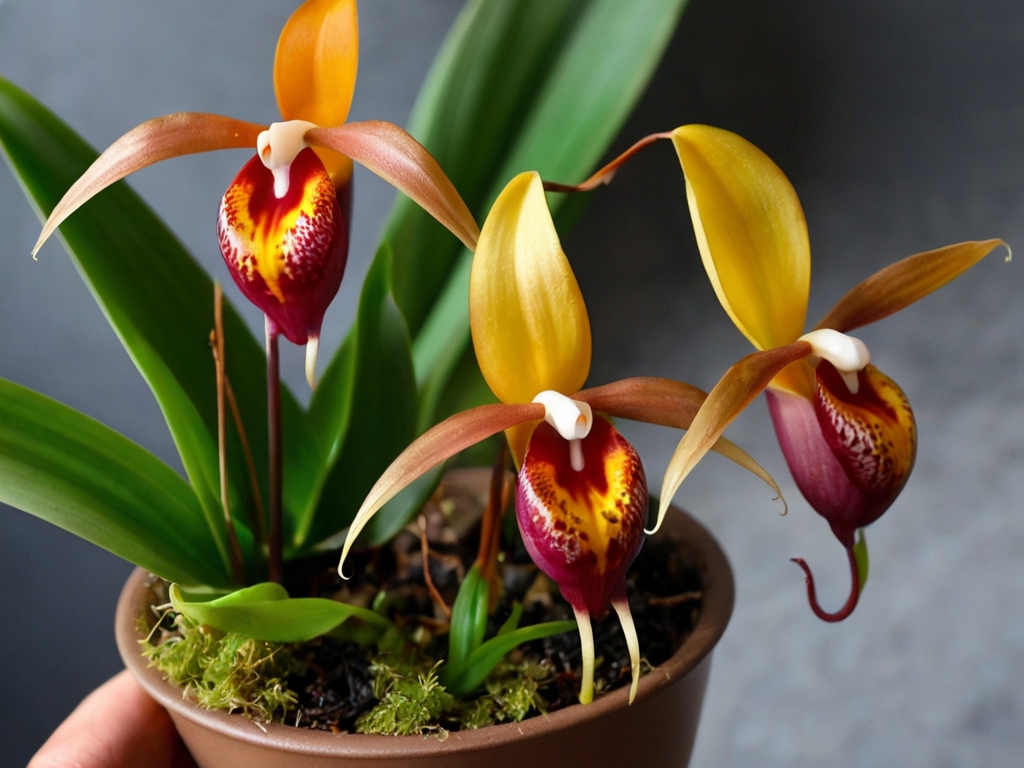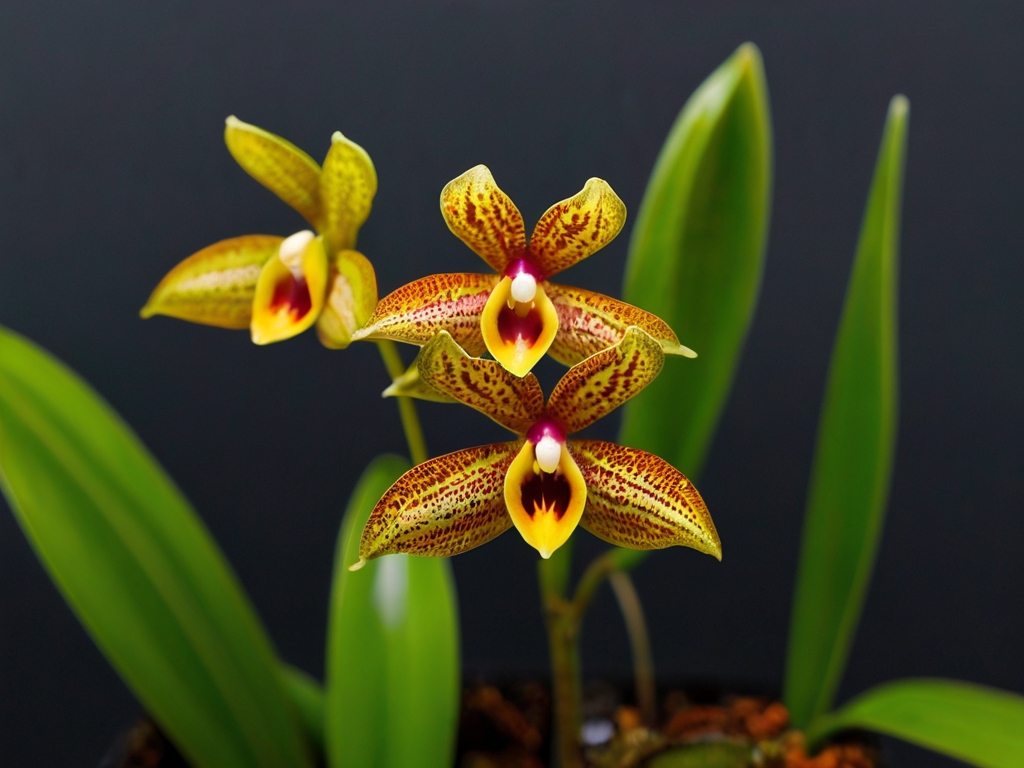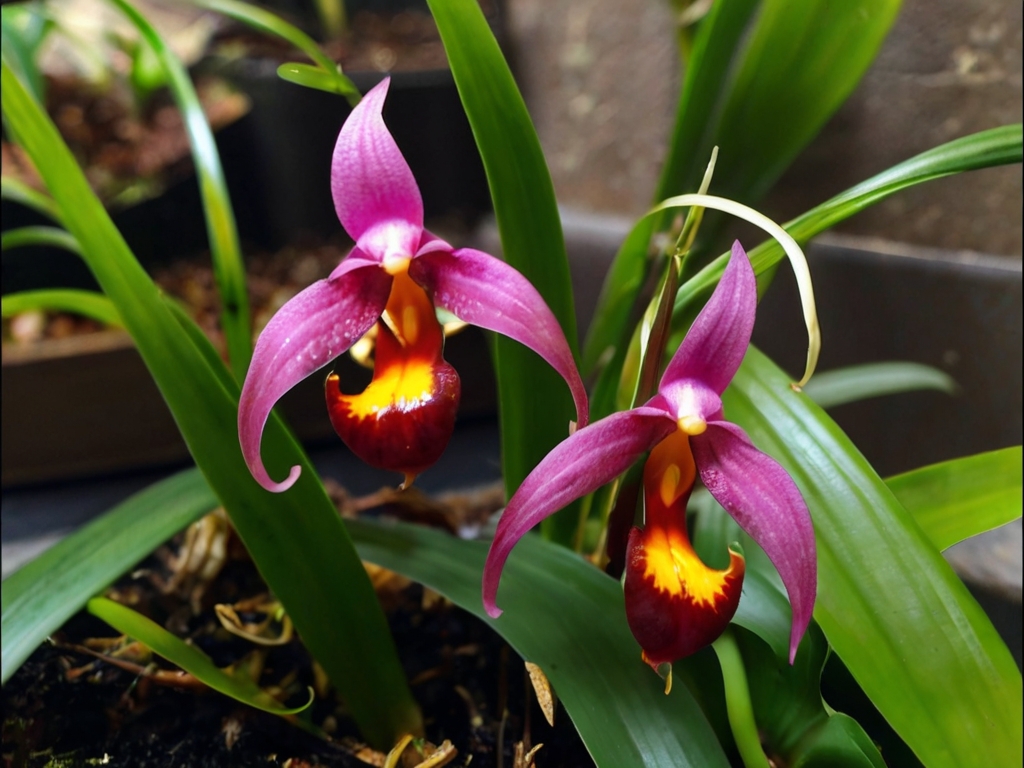Micro orchids, also known as miniature orchids, are a unique and fascinating group of orchids known for their small size. These orchids typically have a growth habit much smaller than their larger counterparts, with some species growing to be only a few inches tall. Despite their small size, micro orchids still possess the same intricate beauty and delicate flowers that make orchids so popular among plant enthusiasts.
Table of Contents
- The Fascinating World of Micro Orchids: Species and Varieties
- Growing Conditions for Micro Orchids: Light, Temperature, and Humidity
- Choosing the Right Potting Mix for Micro Orchids: Tips and Tricks
- Watering Micro Orchids: How Much and How Often?
- Fertilizing Micro Orchids: The Dos and Don'ts
- Repotting Micro Orchids: When and How to Do It
- Common Pests and Diseases that Affect Micro Orchids: Prevention and Treatment
- Propagating Micro Orchids: Techniques and Best Practices
- Displaying Micro Orchids: Creative Ideas for Showcasing These Miniature Marvels
- FAQs
Their ability to thrive in various environments makes microorchids particularly unique and fascinating. Unlike larger orchids that require specific conditions to grow and bloom, micro orchids are more adaptable and can be grown successfully in various conditions. This makes them ideal for those needing more space or resources to care for larger orchid varieties.
The Fascinating World of Micro Orchids: Species and Varieties
Micro orchids are vast and diverse, with numerous species and varieties. Some popular species include the Masdevallia, Pleurothallis, and Dracula orchids. Each species has unique characteristics and requirements, making them a fascinating group to explore.
Masdevallia orchids

The Masdevallia orchid, for example, is known for its vibrant colors and intricate patterns. These small flowers come in a variety of shades, including red, orange, yellow, and purple.
Pleurothallis orchids

On the other hand, the Pleurothallis orchid is known for its tiny flowers that often have interesting shapes and patterns. These orchids often grow on trees or rocks in their natural habitat.
Dracula orchids

Dracula orchids are another popular choice among micro orchid enthusiasts. These unique orchids get their name from the strange appearance of their flowers, which resemble the face of a vampire. Dracula orchids are known for their dark colors and unusual shapes, making them a captivating addition to any collection.
Growing Conditions for Micro Orchids: Light, Temperature, and Humidity
Proper growing conditions are essential for the health and well-being of microorchids. While they are more adaptable than larger orchid varieties, they still have specific requirements that must be met to thrive.
Light
Microorchids prefer bright but indirect light. They should be placed where they receive bright, filtered light for several hours daily. Direct sunlight can be too intense for these delicate plants and cause their leaves to burn.
Temperature
Micro orchids prefer moderate temperatures ranging from 60 to 80 degrees Fahrenheit (15 to 27 degrees Celsius). They can tolerate slightly cooler temperatures at night, but extreme temperature fluctuations should be avoided.
Humidity
Humidity is another important factor to consider when growing microorchids. These plants thrive in high-humidity environments, with levels around 50-70%. You can place a tray of water near the orchids or use a humidifier to increase humidity. Misting the plants with water can also help maintain humidity levels.
Choosing the Right Potting Mix for Micro Orchids: Tips and Tricks
Choosing the right potting mix is crucial for the success of your micro orchids. The potting mix provides the necessary nutrients and support for the plant’s roots. Several different types of potting mixes are available, each with its own advantages and disadvantages.
One popular option is a bark-based potting mix. This mix is made from small pieces of bark and provides good drainage for the orchid roots. It also allows air to circulate the roots, preventing them from waterlogging.
Another option is a sphagnum moss-based potting mix. This mix retains moisture well and is ideal for orchids that prefer higher humidity levels. However, it can be prone to becoming compacted over time, which can lead to root rot.
You can also create your potting mix by combining different materials such as bark, sphagnum moss, perlite, and charcoal. This allows you to customize the mix to meet the specific needs of your micro orchids.
Watering Micro Orchids: How Much and How Often?
Proper watering is essential for the health of microorchids. These plants have small root systems and are more susceptible to overwatering and underwatering.
When watering micro orchids, it is important to strike a balance. You want to provide enough water to keep the roots hydrated but also avoid saturated conditions that can lead to root rot.
A good rule of thumb is to water your micro orchids when the top inch of the potting mix feels dry to the touch. This ensures that the roots have access to moisture without being constantly saturated.
It is best to use room temperature or slightly warm water when watering. Cold water can shock the roots and damage the plant. It is also important to water the orchid thoroughly, allowing water to flow through the potting mix and out of the drainage holes at the bottom of the pot.
Fertilizing Micro Orchids: The Dos and Don’ts
Fertilizing is an important aspect of caring for microorchids. These plants have specific nutrient requirements that must be met to grow and bloom successfully.
When fertilizing micro orchids, it is important to use a fertilizer specifically formulated for orchids. These fertilizers contain the necessary nutrients in the correct ratios for optimal growth.
It is best to fertilize your micro orchids during their active growing season, typically spring and summer. During this time, you can fertilize your orchids every two to four weeks. When the plants are dormant in the fall and winter, you can reduce the fertilization frequency to once every six to eight weeks.
When applying fertilizer, following the instructions on the package is important. Over-fertilizing can lead to salt buildup in the potting mix, which can damage the orchid’s roots. It is also important to flush the potting mix with plain water every few months to remove accumulated salts.
Repotting Micro Orchids: When and How to Do It
Repotting is an important part of caring for microorchids. Over time, the potting mix can break down and become compacted, leading to poor drainage and root rot. Repotting allows you to refresh the potting mix and provide a healthier environment for your orchid.
It is generally recommended that micro orchids be repotted every one to two years. Signs that your orchid may need to be repotted include roots growing out of the drainage holes, a compacted potting mix, or a plant that has stopped growing or blooming.
When repotting, choosing a pot slightly larger than the current one is important. This allows room for the roots to grow without being too overwhelmed by a large pot. It is also important to use a fresh potting mix that provides good drainage and aeration for the roots.
To report your micro orchid:
- Gently remove it from its current pot and carefully untangle any roots that have become tangled or compacted.
- Trim any dead or damaged roots with clean scissors or pruning shears.
- Place the orchid in its new pot and fill in around the roots with fresh potting mix, making sure not to bury the base of the plant too deeply.
Common Pests and Diseases that Affect Micro Orchids: Prevention and Treatment
Like all plants, microorchids are susceptible to pests and diseases. Common pests affecting these orchids include aphids, mealybugs, spider mites, and scale insects. If left untreated, these pests can damage the orchid’s leaves, flowers, and roots.
To prevent pest infestations, inspecting your orchids regularly for any signs of pests is important. This includes checking the undersides of leaves, where pests often hide. If you notice any pests, it is important to immediately prevent them from spreading to other plants.
There are several methods for treating pest infestations on micro orchids. One option is to use an insecticidal soap or oil spray, which can suffocate and kill the pests. Another option is to use biological controls, such as predatory insects or beneficial nematodes, to help control pest populations naturally.
In addition to pests, microgrids can be susceptible to diseases such as root rot and fungal infections. To prevent these issues, it is important to provide proper growing conditions and avoid overwatering. It is important to immediately prevent further damage if you notice any signs of disease, such as yellowing leaves or black spots.
Propagating Micro Orchids: Techniques and Best Practices
Propagating micro orchids can be a rewarding way to expand your collection or share your plants with others. Several methods are available for propagating these orchids, including division, backbulb propagation, and seed propagation.
The division is one of the most common methods for propagating micro orchids. It involves separating a portion of the plant with its roots and repotting it as a new one. The division is typically done when repotting the orchid, allowing you to refresh the potting mix and create new plants simultaneously.
Backbulb propagation is another method that can be used for certain types of microorchids. This involves removing the older, dormant bulbs from the plant and repotting them separately. These bulbs will eventually produce new growth and can be grown into new plants.
Seed propagation is a more advanced method that requires specific conditions and equipment. It involves collecting and germinating orchid seeds to produce new plants. This method can be time-consuming and requires patience, but it can be rewarding to grow unique varieties of micro orchids.
Displaying Micro Orchids: Creative Ideas for Showcasing These Miniature Marvels
Displaying micro orchids is an important aspect of their care, as it allows you to showcase their beauty and create a visually appealing arrangement. Whether you have a single plant or a collection of different varieties, there are numerous creative ideas for displaying these miniature marvels.
One popular option is to create a terrarium or mini greenhouse for your micro orchids. This allows you to control the humidity and temperature levels, creating an ideal environment for the plants to thrive. You can create your display with a glass container or a specially designed terrarium kit.
Another option is to mount your micro orchids on driftwood or cork bark pieces. This creates a naturalistic display that mimics the orchid’s natural habitat. You can attach the orchids using fishing lines or plant ties, ensuring that they do not damage the roots or stems.
If you have a collection of micro orchids, you can create a display by arranging them in a decorative tray or shallow dish. This allows you to showcase the different colors and shapes of the orchids while keeping them organized and easily accessible for care.
Proper display is important not only for aesthetic purposes but also for the health and growth of your micro orchids. Choose a display method that allows for good air circulation and provides the necessary light and humidity levels for the plants to thrive.
In conclusion, micro orchids are a unique and fascinating group of plants that offer a world of beauty in miniature form. From their small size to their intricate flowers, these orchids captivate plant enthusiasts with their delicate charm. Understanding the growing conditions, potting mix, watering, fertilizing, repotting, pests and diseases, propagation, and display methods for micro orchids is essential for their successful care. By providing the right conditions and care, you can enjoy the beauty of these miniature marvels in your own home or garden.
FAQs
What are micro orchids?
Micro orchids are smaller than regular orchids. They typically grow less than 6 inches tall and have small flowers.
Where do micro orchids grow?
Microorchids grow in various environments, including tropical rainforests, mountainous regions, and deserts. They are native to many parts of the world, including Asia, South America, and Africa.
How do you care for microorchids?
Micro orchids require specific care to thrive. They must be kept in a warm, humid environment with plenty of light. They should be watered regularly, not overwatered, and fertilized every few weeks. It is also important to repot them every year or two to ensure they have enough space to grow.
What are the benefits of growing micro orchids?
Micro orchids are a great choice for people who want to grow orchids but have limited space. They are also easier to care for than larger orchids, making them a good choice for beginners. Micro orchids come in various colors and shapes, making them a beautiful addition to any home or garden.
Can micro orchids be grown indoors?
Yes, micro orchids can be grown indoors as long as they are given the proper care. They should be kept in a warm, humid environment with plenty of light, watered, and fertilized regularly. Good air circulation is also important to prevent mold and other issues.

